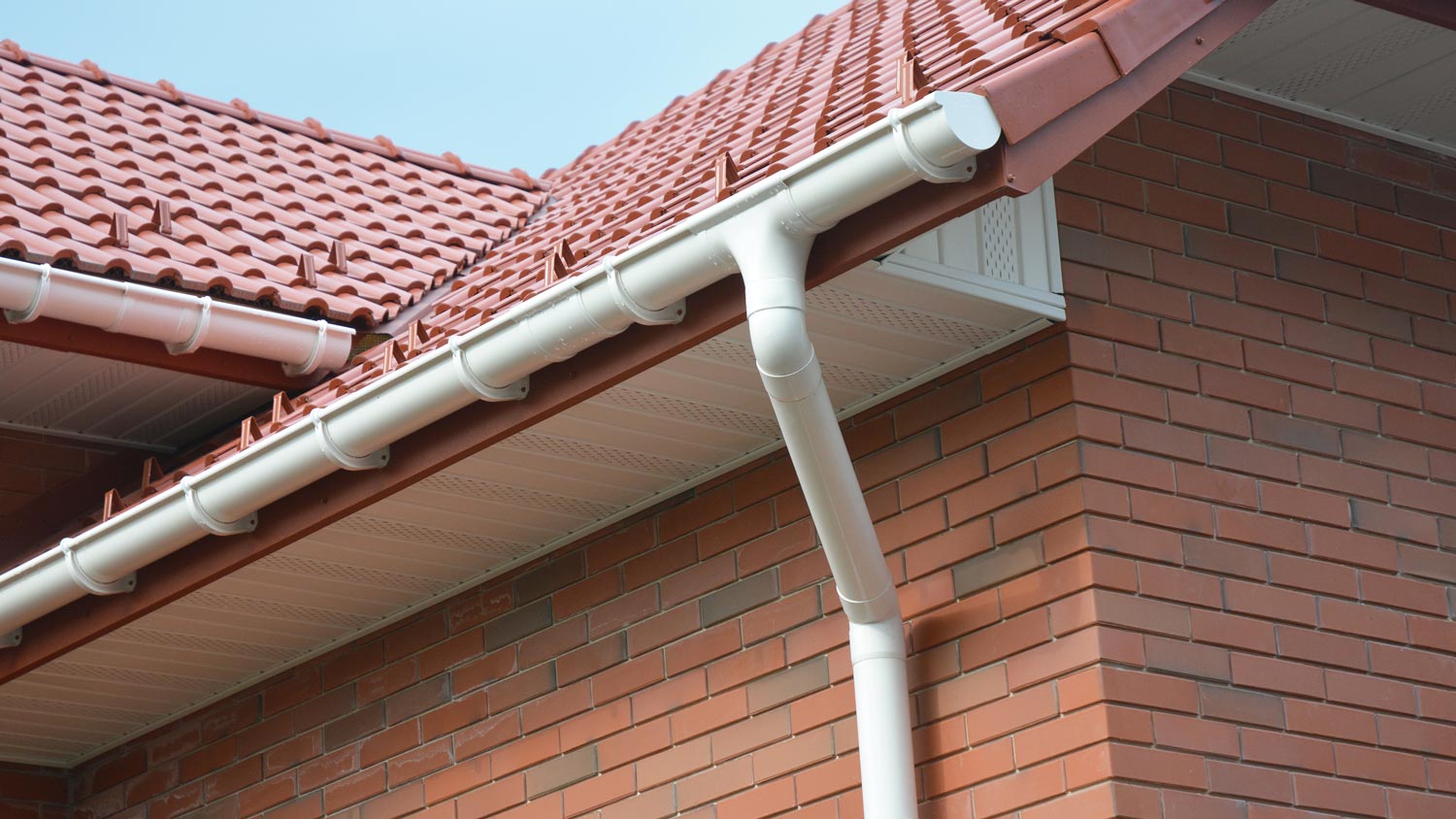
Heated gutters are a great way to minimize gutter damage and maintenance. Use this guide to estimate your heated gutter cost before getting started.
Bring down the gutters without bringing down the house with this guide


Do your gutters need to go? If you're thinking of upgrading your gutters, you may be hoping to save some money on gutter replacement cost by handling removal on your own. While this task can be doable for those who don't mind getting up on a ladder, it's important to remember that improper gutter removal can damage your fascia or roof. That's why most people trust gutter removal to the same contractor they've hired to install a new gutter design. Here's a guide covering what it takes to remove your own gutters.
While gutters may seem easy to remove when you're looking at them from the ground, the stakes become higher once height is involved. Make a sketch of your gutters that identifies where all of the downspouts are located.
Following the steps below, you'll be able to map out a step-by-step plan for tearing off gutters. Here are some big considerations to settle before you begin this project:
Make sure a second person is around to keep your ladder steady.
Have a cordless drill available to avoid getting wires tangled around your ladder's legs.
Create a two-person plan for gently easing larger gutter pieces down to the ground instead of allowing them to fall.
Conduct a close examination of your gutter system to look for any screws, nails, or rivets. A hammer or pry bar should be fine for pulling out nails. If your system contains screws, a screwdriver will be needed to drive them out. Finally, rivets should be removed with a drill.
This portion of the project can be arduous because you'll need to move your ladder inch by inch as you inspect each section of your gutter. You will also be using different tools to carefully and gently remove each section one at a time. Gutter sections are usually sold in standard lengths, such as 10 feet, 20 feet, or even longer.

Removing downspouts is important for preventing the weight of these pieces from dragging on your gutters once they've been detached from your home. A downspout needs to be disconnected from the elbow beneath the gutter drop outlet.
Start by loosening your downspout wall straps. This should make it easier to carefully and slowly pull the downspouts away from your home.
This step may be slightly different based on the type of hardware holding your gutters against your roof. While roof installers use a variety of different options, most attachment systems are designed similarly. Bracket-style hardware is the most common choice.
You'll generally need to use a screwdriver or hammer to disconnect mounting hardware. This is one portion of the project where having a partner is extremely helpful. If possible, ask another person to hold each piece steady while you work on getting the hardware off. Your partner can also help you to ease your loosened gutters down to the ground.
It's very likely that you'll see holes in the places where hardware has just been removed. Ignoring these holes can lead to water getting into your home. Fixing holes left behind by gutter hardware can be done in two different ways.
If you're fixing holes in a vinyl surface, use a caulk gun to fill the holes with caulk. Gently smooth over the caulk with your fingers to ensure an even surface. If you're fixing holes in a wood surface, use a putty knife to fill holes with wood putty.
While this last step is optional, most people prefer to clean up the look of their roof by painting over freshly patched areas.
While it's realistic for an ambitious homeowner to handle gutter removal, it's important to remember that familiarity with roofs and gutter systems can help professionals to avoid causing damage. Any mistakes made during this project could cause leaks and roof damage down the road. You may not realize that you caused damage until it's too late.
Many homeowners are understandably apprehensive to climb up on a ladder to handle heavy gutters. In addition, the gear needed to get this project done safely can often cost just as much as hiring a professional.
If you're looking for solutions for how to fix sagging gutters, roofing pros offering local gutter repair services may be able to offer repair options that skip the need to bring down the entire gutter system.
From average costs to expert advice, get all the answers you need to get your job done.

Heated gutters are a great way to minimize gutter damage and maintenance. Use this guide to estimate your heated gutter cost before getting started.

Installing copper gutters adds beauty and value to your home. The cost of your project will depend on the size of your home, the size of your gutters, and the thickness of the material.

Are gutter guards worth it? The average gutter guard installation cost is $650 to $2,000 but varies depending on types, materials, home height, and other factors.

Wondering how much gutter installation costs? We’ll break down prices by material, gutter type, and other factors impacting overall gutter costs in New York, NY.

Learn about the different types of gutters that can be installed at different price ranges to stop water damage to your home's foundation.

Ensuring your gutter is properly installed will protect your home from water overflow. Learn how far your gutter should be from the roof edge and the facia board.